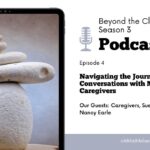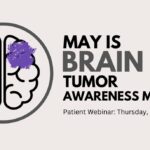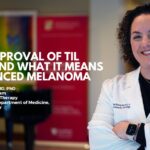Featured Survivor Story:


By Vallerie A. Malkin
Like most public safety personnel, firefighter Seth Bice is used to taking charge of a situation so he can save lives. So when a trip to the dermatologist to see about a bleeding mole turned up melanoma, he admits he was knocked off his feet.

Seth Bice, Stage III Melanoma Survivor
In his career as a paid firefighter in Georgia at Cobb County Fire and Emergency Services, Seth learned to compartmentalize some of the traumatic things he had witnessed. Firefighters don’t just put out fires all day. Most of them are trained emergency medical technicians who are dispatched to back up police every time someone calls 911.
According to Seth, firefighters spend more time performing medical duties and tending to strokes and heart attacks than to oven fires (though they certainly have their share of those).
A resident of Dallas, Georgia, Seth is friendly, polite, and professional with a laid-back southern accent. He often responds to questions by saying “Yes, m’am,” or “No, sir,” as is common in the south. One can easily see him showing up for an emergency and remaining completely calm, working out the problem quickly.
But after Seth’s bout with melanoma and return to the job, he was jolted one day when he and his colleagues answered the call of a terminally ill cancer patient. That’s when he realized that while he was physically well enough to be working, he had underestimated the emotional impact of his melanoma diagnosis. For somebody used to saving lives, he felt awfully vulnerable about his own.
If You See Something, Do Something
Seth knew he should have listened to his wife (he has been married to Katie since 2003) when she noticed in the early months of 2014 that the mole on his rib cage that he had had all his life had begun to change. She told him he should have it checked by a dermatologist. Seth wasn’t that concerned, and eventually, he forgot about it.

Months went by and Katie noticed the mole had changed colors. Like most people, Seth was busy and he procrastinated making the dermatologist appointment. Sometime in early winter, he was working out at the fire station and his side began to itch; he felt liquid running down inside his shirt. The mole had ulcerated and started to bleed.
Katie made an appointment for Seth to see a doctor about the mole, but by the time he got in, it was already January of 2015. The doctor took a biopsy of the mole and sent it to the lab for analysis.
Diagnosed with Stage III Melanoma
Seth was out doing errands with his three-year-old son when his doctor called, asking him to come in and discuss the biopsy results. Alarmed, Seth took his son to the doctor because his wife was teaching. Then the doctor told him the news: He had melanoma, Stage IIA.
A sentinel lymph node biopsy was scheduled at the Emory Winship Cancer Institute in Georgia. An athlete who had been involved in multiple sports, Seth had never even had stitches.
Seth then received some disappointing news: The pathology report designated him Stage IIIC, and the cancer was more advanced than he had thought. A lymphadenectomy was scheduled to remove lymph nodes from under his left armpit. Additional tissue was taken from the surrounding area (near his chest muscles) to be safe.
“I knew I waited too long and had I gone to the dermatologist the first time the cancer would have been less invasive,” he says. “Had my wife not pushed me, the melanoma would have gone through my lymph system and killed me very easily.”
He and his family had to come to terms with the fact that while treatment might work, it was not a given. Seth was not sure how he developed melanoma, but he is fair-skinned with red hair and blue eyes, and “cotton-topped” (another term for tow-headed) as a child; he recalls getting sunburns on and off.
Seth says he knows that most sun damage occurs when a person is young and that red hair and fair skin are major risk factors, so he figures that is his answer.
Recovery, and a Man with a Plan
“It was scary,” says Seth. “But the hardest part was telling my kids.”
Seth is someone who likes to spare people he loves of burdens he knows he can handle himself, but he knew that might hurt them in the long run if he were to become very ill: “I didn’t want to get sick and them not knowing what was going on; I wanted them to begin processing in case.”
The guy who likes to “take control and take care of everything” knew he could not control his destiny, but he could be thorough and prepare in the event that it did not go his way. He even planned his own funeral to spare his wife having to deal with those details if she was in emotional pain. He tried to think of every last thing, dotting i’s and crossing t’s in the event something happened to him.
 Seth’s recovery took a while. His fluids were being drained every day and they needed to be dumped throughout the day. He had some muscle scarring and nerve damage but pain medication took care of discomfort. “It took me a long time to get back to feeling normal,” says Seth. One amusing thing is that because of the nerve damage he is no longer ticklish in that spot. “My daughter forgets and tries to tickle me, so then I get her back.”
Seth’s recovery took a while. His fluids were being drained every day and they needed to be dumped throughout the day. He had some muscle scarring and nerve damage but pain medication took care of discomfort. “It took me a long time to get back to feeling normal,” says Seth. One amusing thing is that because of the nerve damage he is no longer ticklish in that spot. “My daughter forgets and tries to tickle me, so then I get her back.”
For somebody used to being on his feet all day, being in bed was not much fun, but after a few weeks, his doctor approved his return to work doing light duties in the office at headquarters. By June he was back in the field.
“I was able to do the job physically but emotionally it was harder than I realized, and that’s the part of cancer that people don’t see,” says Seth. He also experienced anxiety that it would return: “Every time I felt a pain, I thought, okay, is this cancer? Did they miss something?”
Every CAT scan Seth has, he worries and tells himself: “I don’t want this back.”
That Five-Year Mark
Seth is close to the five-year mark where statistics for recurrence drop drastically. Despite the fact that he has enjoyed four-and-a-half years of clear scans since the surgery, he knows that once you have melanoma there is always a chance it will return.

In light of this, Seth says he leans on faith and especially his family, but he knows some things are out of doctors’ hands. “You have to take what you get and roll with it, and always keep that attitude,” says Seth.
Through Seth’s experience with cancer, he says he has a new appreciation for how tough the fight is: “The field of cancer research is ever-changing, and everyone is doing their best. They have come a long way, but they still haven’t mastered it.”
In the same breath, he knows there are plenty of reasons to stay optimistic. The research being done to find better treatments and a cure for melanoma advance exponentially every decade. Two years ago, AIM at Melanoma nominated Seth to share his story at a meeting in Washington D.C.
“I had never been to D.C. before!” he says. There, he met melanoma patients, doctors, and scientists from all over the country who asked him and other survivors for their opinions on some of the research proposals. It was empowering, he explains, to feel that some of his answers might impact which projects were funded.
Seth was highly impressed by the people he met and how committed they are to finding a cure: “You meet people so smart, it’s crazy. It really gave me an appreciation for what’s going on not just in melanoma but in all cancer research.”
Spreading the Word
Seth says that his experience with melanoma, while difficult, has given him a chance to help other people avoid the disease. His own kids are always covered with sunscreen and clothing. Friends joke that the family wears more clothes going to the beach than they wear around the house.
 “They think we should buy stock in sunscreen companies!” he jokes. When his kids balk at being slathered with sunscreen he uses this method to convince them: “I’ll put my shirt up and say, ‘You need to wear sunscreen and this is why.’”
“They think we should buy stock in sunscreen companies!” he jokes. When his kids balk at being slathered with sunscreen he uses this method to convince them: “I’ll put my shirt up and say, ‘You need to wear sunscreen and this is why.’”
Seth feels it’s his duty to be a walking advertisement for sunscreen and skin checks. Sometimes he takes off his shirt and walks around so that people ask him about his scar; then he can spread awareness by telling them what happened to him.
Because he is so vocal about his melanoma, many of his colleagues at the firehouse have gone in for skin checks, and a few of them have had their melanoma and skin cancers caught early because of his efforts.
Seth has an urgent warning for people: “When you see something change, go get it checked out. Get checked by a dermatologist once a year.” These suggestions sound simple, but Seth knows that they can save a life.
When a Door Shuts, a Window Usually Opens
“It sounds kind of weird but honestly, it’s been a blessing having cancer,” he says. “Melanoma is scary and it’ll probably get me, hopefully, way down the road, but it has also opened doors that never would have opened and allowed me to do some things I’d never have the opportunity to do before.”

Seth attended a fire conference in Atlanta, Georgia and spoke with firefighters and chiefs all the way from Germany to South Carolina to Washington State to Alaska. He is developing a wide support network, and sharing his story gives insight to other survivors. He will continue to support AIM in raising awareness about the disease.
Having melanoma has also opened doors in his working life. Like most firefighters, Seth has a second job doing lawn maintenance, but because of the connections he has made through the disease, he is inspired to get involved in new ventures.
One such venture is the Paulding Public Safety Rodeo in Dallas, Georgia where he and his family live. The rodeo proceeds benefit public safety personnel, like the people he works alongside every day. He’s having a blast, and expanding his connection base gives him a chance to raise awareness about melanoma and sun exposure while he waits for the cure.

Recent Posts

Navigating the Journey Together – Conversations with Melanoma Caregivers

May is Brain Tumor Awareness Month

President’s Letter | April 2024

Celebrating a Milestone: 20 Years of the Dallas Steps Against Melanoma Walk

